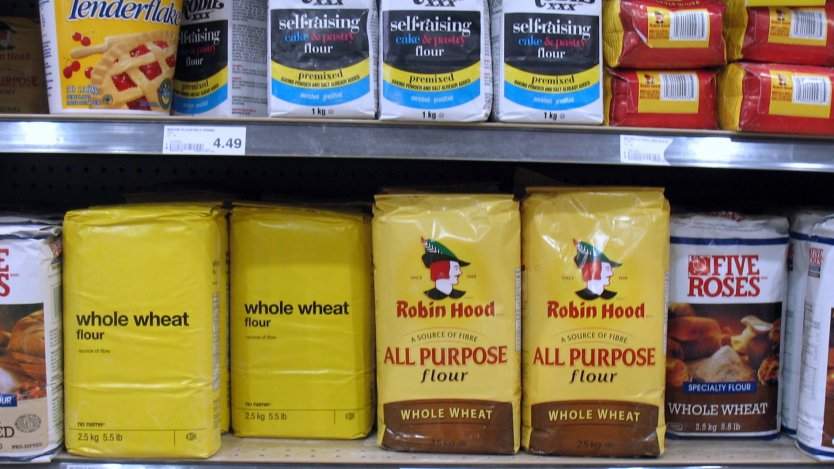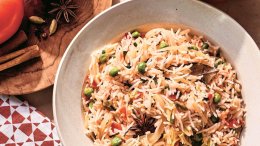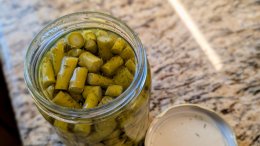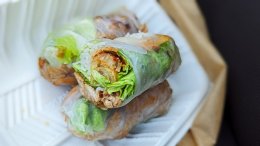Flour is flour, and they are all pretty much the same, right? Not even close! Although most people are familiar with regular all-purpose flour, there are tons of different varieties out there for baking. Before we get started on the different types, here's the 101 on flour.
Flour basics
Wheat flour is milled from wheat kernels, which are composed of three different elements. The bran is the tough outer layer that is ground up and included in whole wheat flour. The endosperm makes up the greatest proportion of the kernel’s weight, containing the majority of the starch and protein, and is utilized in making white flour.
The innermost component of a wheat kernel is the germ or the sprouting seed that allows for the growth of new wheat (if you are planting the seeds rather than eating them). It is also high in fat, relative to the rest of the wheat kernel; hence, it is usually removed to prevent flour from going rancid too quickly. However, wheat germ can be purchased separately and added back into recipes but should always be refrigerated to prolong its shelf life.
All flours have five nutrient components: fat, minerals, moisture, starches and proteins. The different proportions of these are what set flour varieties apart from each other.
Proteins and starches are typically the two nutrients that bakers most interested in. Proteins help form gluten, which is critical to the structure of breads, but less desirable in making tender cakes.
Flour with higher protein content is often referred to as strong or hard flour, whereas flour with less protein is called weak or soft flour.
The role of starch is to soften and swell, allowing for the absorption of moisture during baking, through a process called gelatinization. Starches also provide sugars for yeast to feast off of during fermentation.
All-purpose (AP) Flour
All-purpose flour is just that. It is used for general baking, rather than having one specific purpose. Although this means that it cannot be perfectly suited for every recipe, if you do not do a lot of baking, it is the best variety to keep on hand because of its versatility. It contains a medium amount of protein (less than bread flour but more than cake flour) and is best suited for simple baked goods like muffins and scones.
Self-Rising Flour
Self-rising flour also contains a chemical leavener such as baking powder, in addition to a basic flour. Because of this, it is used primarily in quick breads such as muffins, but not in the making of yeast bread. Many British recipes call for self-rising flour but it is not readily used in North America. It's tricky to know what the ratio of flour to leavener is and you lose control of the amount of leavener used. For all you know, you may need more leavener than your self-rising flour contains. Make it easy on yourself and stick to all-purpose. If a recipe happens to call for self-rising flour, simply add one and a half to two teaspoon of baking powder for every cup of flour used.
Bread Flour
Bread flour contains the highest amount of protein of any flour variety (other than something like an Italian 00 flour, used in making high gluten pasta). Bread relies on gluten-forming proteins to give it structure and chew. Without protein and thus gluten, bread would not be able to rise; instead, carbon dioxide created by the yeast would escape, rather than being trapped by the gluten strands that lift the bread up. If you have a bread recipe that calls for all-purpose flour, feel free to use bread flour instead.
Cake or Pastry Flour
Flours used for cakes and pastries have the least protein and most starch. Gluten development is not something you want for cakes, as it contributes to a tough and chewy texture. Cake and pastry flour should always be sifted prior to using for a moist cake, as it tends to clump together, much like cocoa powder.
Whole-wheat Flour
Whole wheat flour is made from milling the bran and endosperm, but not the germ. Because of this, it is much coarser in texture, but it also has a toasty, nutty flavour. Including the bran in the flour makes baked goods denser and hearty than those made with white flour. When making bread with whole-wheat flour, be careful not to over-knead the dough as the sharp edges of the bran can tear the gluten you are trying to form.
Non-wheat Flours
Flour can be made from a variety of seeds, grains and beans, not just wheat. The primary difference is that they do contain gluten, which can affect the structure and texture of the final product. Also, each come with its own unique flavour. When doing gluten-free baking, flours like chickpea, rice and quinoa are often combined with starches, such as cornstarch or potato starch, to act as a binding agent to hold everything together.
Rye flour is a non-wheat flour made from rye berries rather than wheat berries (kernels). The colour of the rye flour depends on the part of the rye berry from which it was milled. Flours made from the innermost portion of the rye berry are the lightest, whereas pumpernickel rye comes from milling the entire rye berry, bran and all.
Now that you know what is out there, try swapping out that good ol' AP flour for something new to add different texture and flavour to your baked goods!
References: Labensky, S.R., Hause, A.M., Martel, P.A., Malley, F.L., Bevan, A., & Sicoli, S. (2012). On cooking: A textbook of culinary fundamentals (5th ed.). Toronto: Pearson.













